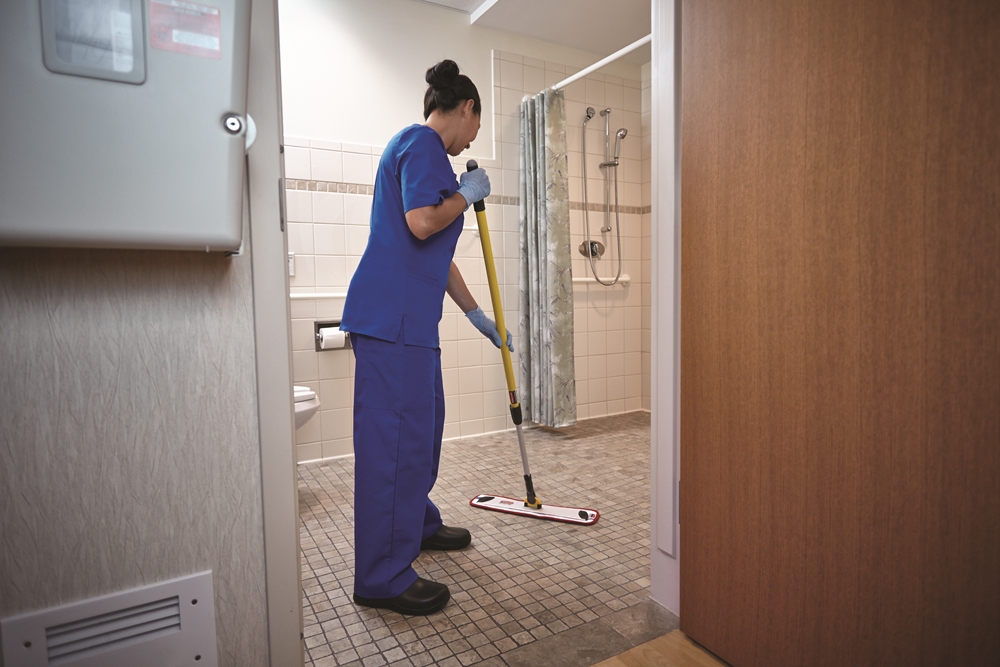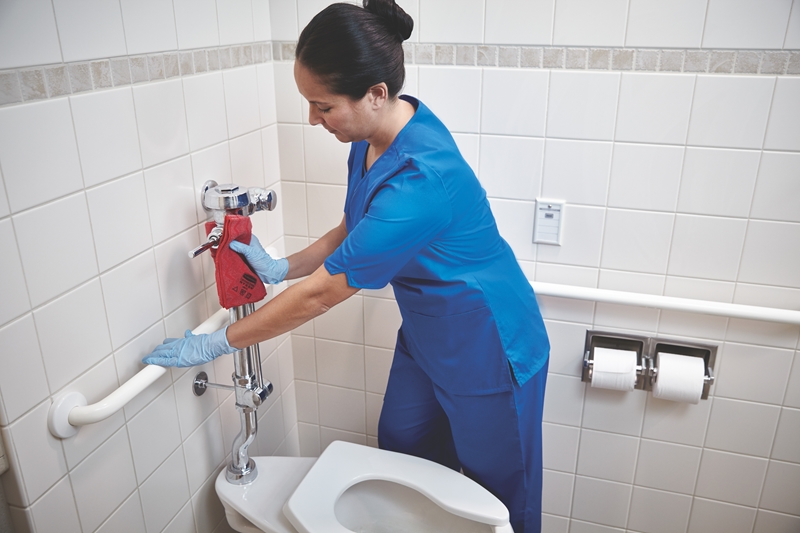
Older adults are more susceptible to infections due to factors such as chronic conditions and weakened immune systems. That's why aged care facilities require high standards of hygiene and cleanliness to reduce the risk of spreading infections among residents. Strong, formalised cleaning procedures and regular training can help cleaning staff maintain conditions that meet or exceed cleanliness regulations.
Documented cleaning procedures ensure that key practices are never overlooked or forgotten. Aged care facilities should maintain custodial guides and training that reinforces cleaning best practices. In addition, regular audits of cleaning routines can ensure that any gaps in cleaning schedules are filled. There should be clear governance over the facility's hygiene program. It may be helpful to post an organisational chart detailing the relationships between cleaning services and internal staff. It should always be apparent who is responsible for each piece of the cleaning schedule.
Not only should all cleaning techniques be documented, but also each instance of performed cleaning activities. Maintaining records enables staff and supervisors to ensure that all necessary activities have been completed to the correct standards. Cleaning staff should record when each task has been completed and who performed the work. If problems occur, they should be documented and elevated to someone who can find a remedy to non-compliance. For instance, if cleaning products become depleted, a manager should take action to replace those resources. Furthermore, complaints from residents and staff should be recorded and investigated to ensure full compliance as well as to mitigate risk to personal safety.
Thorough cleaning of surfaces, including floors, is essential to environmental hygiene in aged care facilities. Surfaces can easily become reservoirs for infectious pathogens, which can, in turn, affect other high-touch objects. For example, if a handbag touches the floor in one resident's room and then touches the bed of another resident, this transfer could spread germs from one place to another. Microfiber cloths that capture dust particles are effective at reducing the amount of airborne particles in indoor environments. Vacuuming should only be conducted in rooms with proper ventilation, for the same reason. Moreover, surfaces should be wiped down with a neutral detergent and warm water, then rinsed to prevent resident exposure to chemicals. Special attention should be paid to high-touch surfaces and items such as doorknobs, beds, dressers and windows.

Areas frequently exposed to moisture are more likely to become breeding grounds for bacteria. Ensuite bathrooms should be cleaned at least once daily and communal bathrooms should be cleaned more frequently. In addition to floors and walls, custodians should sanitise all toilets, sinks, washbasins, showers and tubs. Likewise, all fittings should be scrubbed daily. Custodians should begin their cleaning routine with the cleanest areas first to avoid spreading dirt, dust and pathogens around.
Dry mopping, also known as dust mopping should be conducted before wet mopping. This order reduces the risk of mop water becoming contaminated before the custodian finishes cleaning the room. Both dry and wet mopping are most beneficial when completed using a microfiber mop head. This type of mop head is better at trapping particles and is easier to clean. It is best practice to launder microfiber cloths after each use. Disposable microfiber products are best used to clean areas with a high risk of exposure to infectious pathogens.
Exposure to bodily fluids such as blood and vomit can greatly increase the risk of infection. These types of spills should be removed and sanitised with absolute haste to prevent the spread of disease. Specialised spill mops represent one of the best ways to eliminate this risk quickly and easily. Absorbent mop heads turn liquids into a gel to prevent leaks. Once the hazardous material has been removed and disposed of in a specially labelled bin, the area should be disinfected and rinsed with water.
In aged care facilities, custodians are likely to encounter three types of waste: general, clinical and pharmaceutical. General waste should be stored securely until it can be collected and removed from the facility. Regularly emptying waste bins reduced the risk of exposure to bacteria. Clinical waste should always be placed in biohazard bags and disposed of in specially marked bins. Single-use sharps should be placed into sharps containers and removed according to Australian standard AS 4031-1992. Unused and leftover pharmaceuticals should be returned to a pharmacy for proper disposal.
Resident linens should be changed weekly or when soiled. Dirty linens should be stored in bins until they are sent to be laundered. Linens should never be rinsed or sorted in resident areas. Additionally, heavily soiled linen must be bagged to prevent leaks. Cleaning equipment should be sanitised and disinfected daily. Mop buckets should be cleaned and rinsed after each use. Also, mop heads should be laundered and dried before being put into use again.
Custodial staff should be aware of the risks associated with their job duties and responsibilities. Custodians should wear personal protective equipment when working with potentially hazardous substances. Wearing gloves, face masks and eye protection can prevent the spread of infection. Likewise, it can prevent undue exposure to cleaning chemicals. Custodians should wash their hands frequently and especially before coming into contact with residents. To learn more about the latest innovations in cleaning solutions, check out what Rubbermaid Commercial Products has to offer.